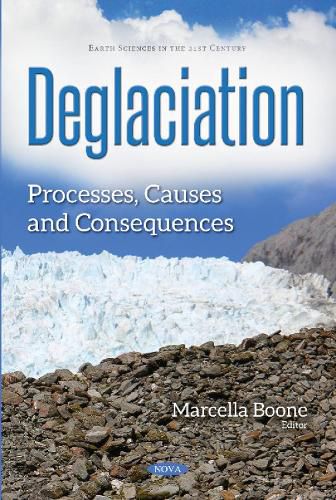Readings Newsletter
Become a Readings Member to make your shopping experience even easier.
Sign in or sign up for free!
You’re not far away from qualifying for FREE standard shipping within Australia
You’ve qualified for FREE standard shipping within Australia
The cart is loading…






Global climate during the Quaternary has been deeply influenced by glacial-interglacial oscillations. Since the onset of glaciations, the Earth has experienced alternations between warm and stable climatic periods coinciding with interglacials, and cold and highly variable climatic intervals coinciding with glacials. In a suborbital timescale, climate oscillations were maximal during glacial onsets and, very especially, during deglaciations. Previous deglaciation events were associated with diverse changes in earths atmospheric, physical and biotic environments. Chapter One contains a brief outline of a case study conducted in western Canada to constrain the Late Pleistocene retreat of the Laurentide Ice Sheet from the region. Chapter Two reports on the influence of deglaciations in the mid-latitude European climate. Chapter Three aims to highlight the influence of global and regional paleoceanographic changes on the deglaciation of the marine based Barents ice sheet since the last glacial maximum (LGM) until the onset of marine environment in the Holocene.
$9.00 standard shipping within Australia
FREE standard shipping within Australia for orders over $100.00
Express & International shipping calculated at checkout
Global climate during the Quaternary has been deeply influenced by glacial-interglacial oscillations. Since the onset of glaciations, the Earth has experienced alternations between warm and stable climatic periods coinciding with interglacials, and cold and highly variable climatic intervals coinciding with glacials. In a suborbital timescale, climate oscillations were maximal during glacial onsets and, very especially, during deglaciations. Previous deglaciation events were associated with diverse changes in earths atmospheric, physical and biotic environments. Chapter One contains a brief outline of a case study conducted in western Canada to constrain the Late Pleistocene retreat of the Laurentide Ice Sheet from the region. Chapter Two reports on the influence of deglaciations in the mid-latitude European climate. Chapter Three aims to highlight the influence of global and regional paleoceanographic changes on the deglaciation of the marine based Barents ice sheet since the last glacial maximum (LGM) until the onset of marine environment in the Holocene.